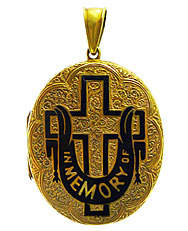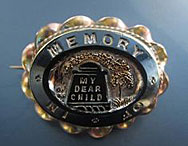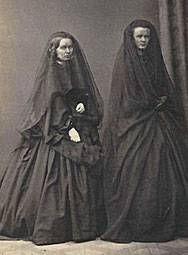Locket
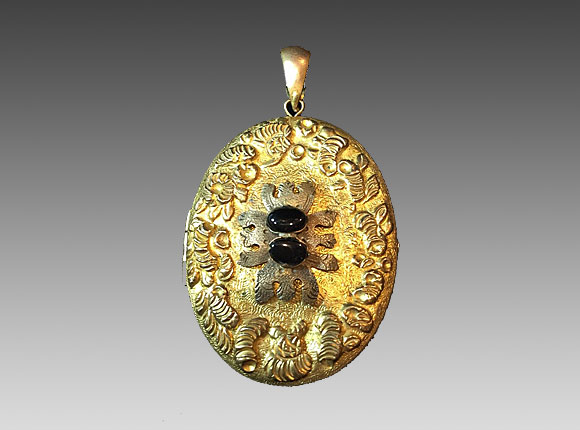
Needle Case (photograph from eBay)

Design Representation
Note: The diamond registration mark on this needle case translates to August 10, 1877 which doesn't match the date this design was registered. After a thorough review of all metal designs registered to Elijah Atkins at the UK National Archives (TNA) website from January 1, 1877 thru December 31, 1877, it was discovered that there were only seven designs registered that year to Elijah Atkins.. Several of these designs, including the one for the Locket needle case, did not list a subject to indicate the type of design. A dress holder #312875 was registered by Atkins on August 10, 1877. It appears as though Atkins accidently used the diamond mark for the dress holder on their Locket needle case. The firm Coggins & Baxter made a similar mistake on their Lap Desk - Floral and Looking Glass needle cases proving that other manufacturers also made these types of errors. Although the diamond registration mark for the Locket differs from the date this design was registered and there is no subject listed on the registration documents, the Locket is in fact a needle case because it is stamped with a needle manufacturers name, H. Milward & Sons - Redditch, and has a place inside where needle packets can be stored. Additionally, Atkins registered another needle case, the Hector, which is only found with the Milward name. The Locket design was probably originally intended for jewelry because of the monogram, but perhaps Milward saw the potential and asked Atkins to enlarge the format. Instead of a monogram, which would have been impractical on pressed brass, the stones were used on a base plate the shape of which looks to be heavily influenced by the outline of the monogram on the design registration.
Design Details
Needle Case Type: |
Flat-Names |
Patent/Registered to: |
Elijah Atkins - Birmingham |
Patent/Design Representation #: |
Ornamental Class1: Metal: #316886 |
Patent/Design Registration Date: |
December 7, 1877 |
Location of Patent/Design Registration: |
The National Archives (TNA) - Kew, UK |
Reference #: |
TNA Representation - BT 43/43/316886 |
Dimensions: |
5.1 x 4.1 cm and with the loop 6.2 cm long. The thickness of the locket base is 0.7 cm but 1.3 cm maximum at the section with the stones. |
Material: |
Brass |
Name Variations: |
H. Milward & Sons - Redditch |
Other Variations: |
None |
Additional Photographs
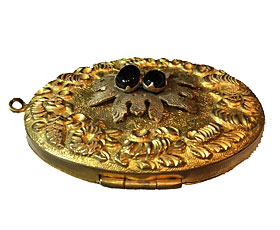
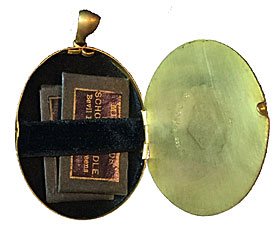
Side view and open view (photographs from eBay)
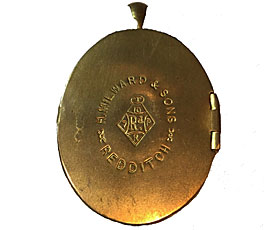
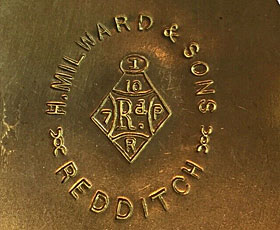
Back and name detail with a diamond registration mark equal to August 10, 1877.
A special thank you goes to Lynda Herrod of Brisbane, Australia for finding this item and assisting me in learning more about it. Without Lynda having brought this to my attention I never would have considered this item and for that I am grateful. Lynda is another Avery collector as passionate about her collection as I am about mine. Although we live 14,355 kilometers or 8,920 miles apart (according to Google), Lynda is my constant email companion who always responds quickly to my queries, contributes well researched content and provides excellent feedback. Although we have corresponded via email since 2012, Lynda and I first met in person at the Thimble Collectors International conference in Kansas, City, MO in 2014. A few days later she visited me at my home in Illinois. In 2016 I had the pleasure of meeting Lynda again, this time at the Needlework Tool Collectors Society of Australia conference in Melbourne, Australia. We spent eleven days together attending the conference and visiting Melbourne, Cairns and Brisbane. One of the highlights of my trip Down Under was seeing her Avery collection. In 2017 we met again, this time in Bournemouth, UK at the Dorset Thimble Society's annual meeting and a few days later in Redditch, UK where Avery needle cases originated. For the past year, we have met on a weekly basis online via ZOOM. Below are photos of Terry and Lynda in 2016 and 2017.
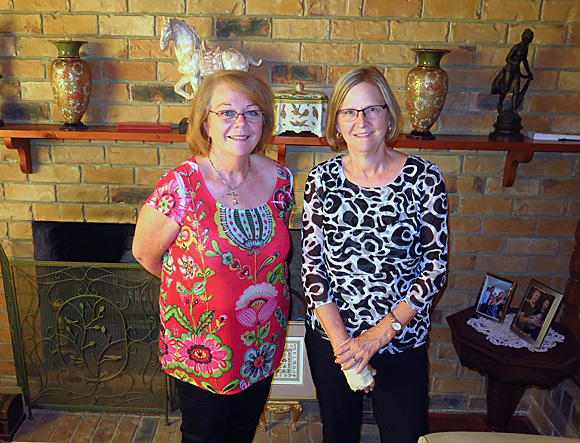
Terry with Lynda in Brisbane, Australia in 2016.
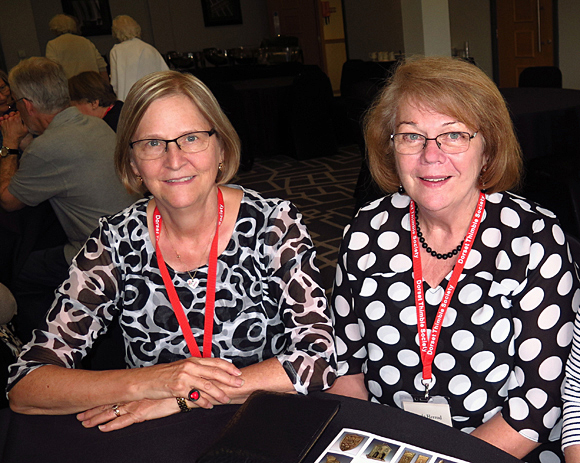
Terry with Lynda in Bournemouth, UK in 2017.





